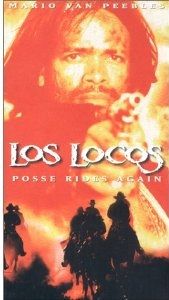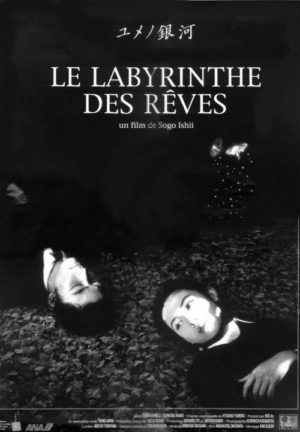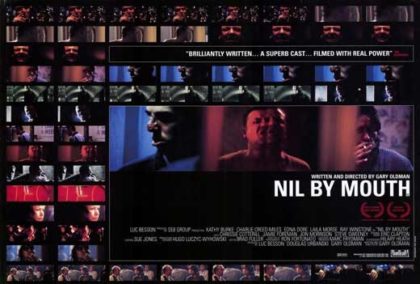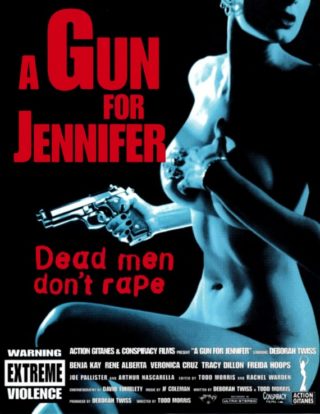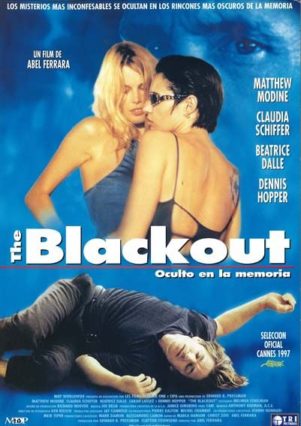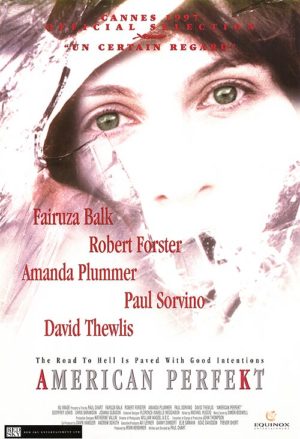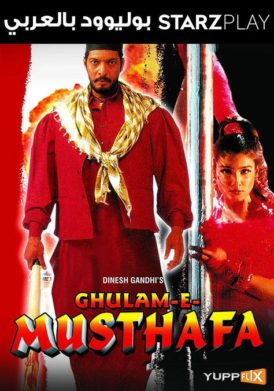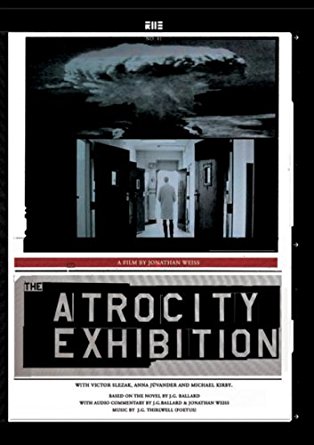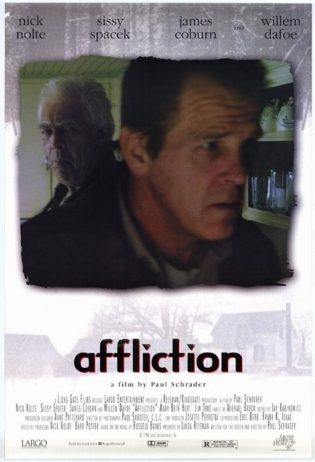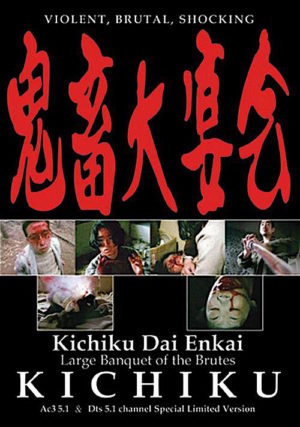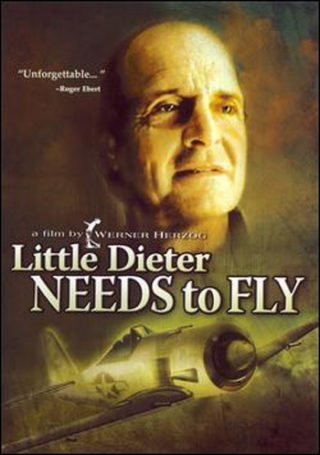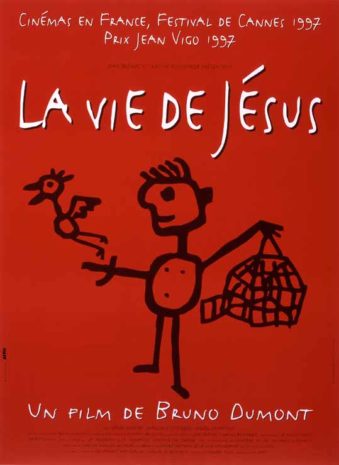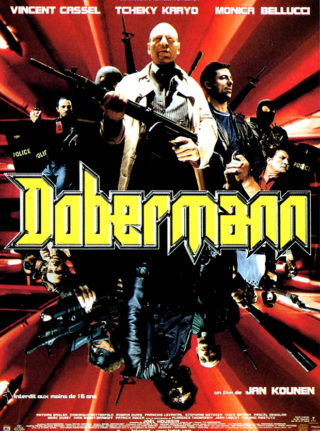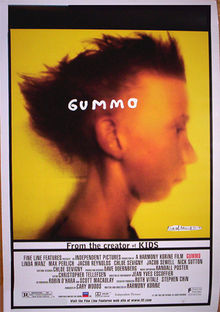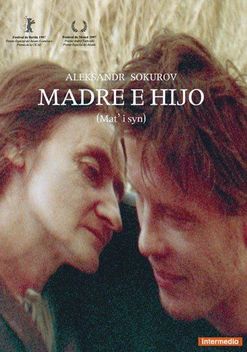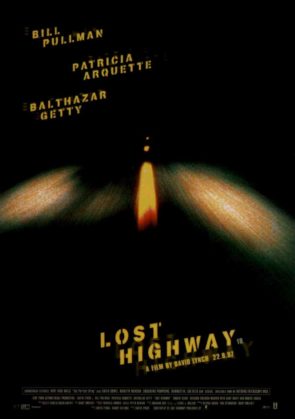Continuing with my time-reversed year-end film listings, we come to 1997. As with the others, this one will cover thirty neglected and/or underappreciated films, ranked accordingly.
Of the year overall, I don’t recall it being particularly auspicious from a cinematic standpoint, with the big movies (TITANIC, THE LOST WORLD, MEN IN BLACK, THE FIFTH ELEMENT) all failing to retain their power twenty-plus years later. The same can be said for a number of lesser-known 1997 releases that could conceivably have been included in this listing (such as GREEN FISH and BREAKDOWN) but, to these eyes at least, haven’t held up. Luckily, there were quite a few films that have retained their luster, starting with…
30. LOS LOCOS
This agreeably grungy straight-to-video western was sold as a sequel to POSSE (1993), but that doesn’t appear to be the case–even though it was scripted, produced and headlined by that film’s director/star Mario Van Peebles. He plays a left-for-dead gunslinger who falls in with a band of crazies and takes on bandits led by Danny Trejo, leading to the inevitable final act shoot-out. The direction by future BIG LITTLE LIES helmer Jean-Marc Vallée is stylish, the desert scenery is striking and there are some memorable performances (particularly by MAGNOLIA’S Melora Walters). Not a great film, but a diverting one without question.
29. SICK: THE LIFE AND DEATH OF BOB FLANAGAN, SUPERMASOCHIST
An admirably open-minded documentary on the late self-proclaimed “supermasochist” Bob Flanagan. The film, directed by Kirby Dick, isn’t particularly innovative in terms of form, but its subject is anything but ordinary. As a kid Flanagan was diagnosed with cystic fibrosis, which causes its sufferers’ bodies to fill up with mucous and makes life a misery. Most CF patients apparently die in their twenties but Flanagan managed to prolong his life until age 43 because, he claims, of his penchant for B&D at the hands of his longtime partner Sheree Rose, an enthusiastic disciplinarian. Dick includes a great deal of disgusting footage of Flanagan being pierced in various sensitive parts of his body, and at one point getting his dick nailed to a board. Also featured are some humorous performance pieces by Flanagan, showing that he had a healthy sense of humor about himself. Of course, Dick admits in the DVD extras that he left Flanagan’s more irascible side out of the film, focusing instead on the man at his most funny and charming. In any event, the final scenes, showing Flanagan in his last days, are undeniably moving.
28. LABYRINTH OF DREAMS (YUME NO GINGA)
This fascinating and disturbing experimental thriller hails from Japan’s great Sogo Ishii. It’s one of Ishii’s late period films, which tend to be excessively stylish and refined, in direct contrast to the anarchic punk-fueled works with which he made his name. This is likely the most controlled and low key of all Ishii’s films, an extremely concentrated black and white look at a bus driver (Tadanobu Asano) who may be a killer and the pretty young conductor (Rena Komine) who falls under his spell. She wants revenge for the apparent murder of her best friend in a bus accident, but finds herself powerless to resist the driver’s charms. The film is often downright obnoxious in its painstakingly stylized minimalism; like Ishii’s 1994 dazzler ANGEL DUST, it presents traditional horror movie fare in an extremely experimental and self-conscious (at times agonizingly so) fashion.
27. DRIVE SHE SAID
A brisk and colorful Canadian import about a young woman, nicely played by the underrated Moira Kelly, whose life changes when she’s kidnapped by bank robber Josh Hamilton. It may start out like one of the innumerable Tarantino wannabes that littered the nineties, but DRIVE SHE SAID is a warm, feel-good drama all the way (writer-director Mina Shum’s previous film was the aptly titled DOUBLE HAPPINESS, after all), although it’s not at all predictable. Without giving anything away, I can say that the young-lovers-on-the-run don’t leave too many bodies in their wake (one of the reasons, I’m sure, this film was ignored by American distributors), the bank robber doesn’t reform his ways and they don’t ride off into the sunset. In fact, the sorta-happy ending actually (for once) works quite well.
26. NIL BY MOUTH
This is the first—and thus far only—feature directed by Gary Oldman, who provides a profoundly bleak, ultra-naturalistic portrayal of working class England in the mold of the late Alan Clarke—who directed Oldman in THE FIRM back in ‘89. Oldman also utilizes another former Clarke cast member, Ray Winstone, playing what has become his standard role: a sub-literate thug who’s every other word is “cunt.” He beats up nearly everyone in the film at some point, including his long-suffering wife (Kathy Burke) and junkie brother-in-law (Charlie Creed-Miles). In the meantime actors stand around blathering in near-indecipherable accents while Oldman’s camera observes them documentary-like from afar. Oldman may indulge his actors in quite a few interminable scenes that go nowhere, but the whole thing has a crackling intensity, and some truly jolting brutality.
25. THE WITMAN BOYS (WITMAN FIUK)
A beautifully photographed Hungarian oddity about evil kids. DEVIL TIMES FIVE or WHO CAN KILL A CHILD? however, THE WITMAN BOYS isn’t. Rather, it’s a heavy-handed art film in the Tarkovsky/Tarr tradition, with burnished candlelit illumination and extremely measured pacing. The narrative is quite simple, involving two brothers who after their father dies and their mother ignores them take to mutilating animals and visiting a prostitute. The latter demands the boys bring her a gift, thus setting in motion the horrific climax. The moral, that lax parenting leads to trouble, isn’t exactly novel, and nor is it presented with much subtlety or profundity. But again, the film looks damn good, and has a profoundly disturbing aura.
24. A GUN FOR JENNIFER
A reasonably potent addition to the female revenge movie subgenre that was never commercially released in the US. The pic was a bit overrated by the underground press, but I can’t deny that, as an exuberantly skuzzy throwback to the grindhouse programmers of the 1970s, it works. About a young NYC woman inducted into a feminist vigilante squad, it’s modeled on down-and-dirty classics like LAST HOUSE ON THE LEFT and MS. 45, and like those films works primarily due to its outrageousness—manifested in countless bloody shootings, several stabbings, a couple castrations and even a dissection. In keeping with the low budget aesthetic the acting is uniformly amateurish (there’s a reason we haven’t heard much from names like Benja Kay, Freida Hoops or Sheila Schmidt) and the narrative a paint-by-numbers affair that over-relies on dialogue. Yet the irresistible splat-happy climax, like those of quite a few classic grindhouse flicks, is satisfying enough to make up for many of the film’s shortcomings.
23. KITCHEN PARTY
This Canadian teen comedy has many good things—so many, in fact, that I wish it were better overall. Writer-director Gary Burns, following up the previous year’s similarly themed SUBURBANATORS, has a great touch with his young cast, coaxing superbly naturalistic performances from up-and-comers like Scott Speedman and Laura Harris. The story, about a teen (Speedman) attempting to throw a party in the kitchen of his uptight parents’ house, isn’t much, but the film is rich in quirky detail (a stray bullet provides quite a bit of mileage) and contains a sense of realism sorely lacking in most Hollywood teen flicks. The problem is Burns’ insistence on intercutting the protagonists’ parents throwing their own party, and the grown-ups aren’t nearly as funny, or convincing, as their kids.
22. THE BLACKOUT
One of Abel Ferrara’s most obsessive descents into sin and sleaze, this is yet another of his uncredited BAD LIEUTENANT redoes, following DANGEROUS GAME (a.k.a. BAD DIRECTOR) and THE ADDICTION (a.k.a. BAD VAMPIRE). THE BLACKOUT, which took four years to find US distribution (and then went straight to DVD), might as well be called BAD ACTOR, as that pretty much sums up its story of an asshole movie star (Matthew Modine) bottoming out in Miami Beach in a haze of bimbos and alcohol. Modine comes to suspect that he might have murdered his wife (Beatrice Dalle) during an alcohol-induced blackout, but is so trashed he can’t be sure. A relentlessly druggy, hallucinatory film that drifts from one sleaze-packed episode to the next, it’s certainly attention-getting, and quite a kick seeing Modine ditch his goody two-shoes image to play one of the slimiest protagonists in film history (inspired no doubt by its maker).
21. BAR NONE
This Canadian DIY comedy is crude, amateurish and nonsensical, but that’s all part of its charm. Director Mark Tuit would appear to be Canada’s answer to Kevin Smith, and this is Tuit’s CLERKS, i.e. a raunchy no-budget look at the service industry—bartenders in this case. Tuit used to be a bartender, and his experience is evident throughout this lively and entertaining film that features a plethora of endearing characters both in front of and behind the bar. On the downside, the pacing is erratic, the dialogue sounds like it was recorded in a wind tunnel and the gags often fall flat, although when they hit they tend to hit big (a bit involving projectile vomiting in the ladies restroom damn near literally had me laughing my ass off).
20. AMERICAN PERFEKT
An excellent thriller with a great performance by Robert Forester, made prior to his “comeback” in JACKIE BROWN (although for some unfathomable reason AMERICAN PERFEKT wasn’t commercially released in the US until 1999). It’s a desert-set serial killer drama in the mold of classics like THE HITCHER, RED ROCK WEST and THE VANISHING—and, for its first hour, actually matches those classics with its flawless performances, atmospheric filmmaking and unpredictable storyline. Amanda Plummer is a stranded motorist who has the misfortune to meet up with Forester, playing a homicidal psychopath who’s every decision is based on the flip of a coin. I won’t spoil any of the sordid details, except to say that there’s at least one murder, a kidnapping and an appearance by Plummer’s long lost sister, played by the nineties indie movie queen Fairuza Balk. Again, though, that’s just the first hour; the final 30 minutes are somewhat more conventional, with the introduction of two goofball cops, yet writer-director Paul Chart still manages to pull off some satisfying last-minute twists.
19. IN THE COMPANY OF MEN
This, the first film by Neil LaBute, is hampered somewhat by a miniscule budget (a whopping 25 grand) and the fact that it’s essentially 97 minutes of non-stop talk. Nonetheless, it’s such a superbly corrosive study of depravity that I’m willing to put aside those negatives. It involves two corporate shitheads (Aaron Eckhart and Matt Malloy) who decide to get revenge on the female race by screwing over a deaf co-worker (Stacy Edwards)—but the question of who is really being manipulated isn’t as clear-cut as it initially seems. As with LaBute’s nearly-as-potent follow-up YOUR FRIENDS AND NEIGHBORS, every character ends up getting screwed over but for the most selfish and abusive of the bunch. Featuring some of the most excruciatingly cruel moments ever put on celluloid (one reviewer called this a “psychological snuff film”), this impressively visualized film is one hard, uncompromising ass kicker, not least because you might just recognize yourself in any and all of its characters.
18. GHULAM-E-MUSTAFA
This Bollywood gangster movie is jam-packed with violence and excess, playing like an especially over-the-top B-movie. As is standard with Bollywood cinema, it runs nearly three hours, straddles genres with aplomb, contains several music numbers and is pitched at an emotional level that makes most soap operas seem restrained. Bollywood action movie mainstay Nan Patekar stars as a mob enforcer who falls in love with a sexy cabaret dancer (Raveena). When she unexpectedly gets killed the now wheelchair-bound Patekar moves in with her family in order to make things right–and of course hits the revenge trail as well! The gangster movie business of the first half is uninvolving and generic, but things pick up mightily after the intermission, with some positively mind-blowing action set-pieces, in particular one involving a giant mirror, a speeding car and Patekar’s wheelchair, a sequence that is, like the film overall, insanely excessive and plain nutty—but quite satisfying nonetheless.
17. NIGHTWATCH
NATTEVAGEN (1994) was a masterful Swedish thriller by director Ole Bornedal. In lieu of a US release, Bornedal remade the film in English, as George Sluizer previously did with THE VANISHING. It seems like a rotten idea, as Sluizer’s horrendous VANISHING redo proved, but the outcome here was a bit more agreeable. As in NATTEVAGEN, NIGHTWATCH has a compelling story about a college kid (Ewan MacGregor) who unwisely takes a part-time job as a night watchman in a morgue. This job turns out to entail far more strife than he bargained for, however, as a serial killer appears to be using the morgue as his base of operations. MacGregor proves far more personable in the lead role than the guy in NATTEVAGEN (whose name I’ve forgotten); likewise Patricia Arquette as MacGregor’s GF and Josh Brolin as his troublemaking best friend. Overall the film suffers from an excess of Hollywood BS (the cinematography is overly glossy and all the extras look like supermodels), but remains quite effective. Experiencing it on a big screen was quite an experience, as I recall: absorbing and creepy, so much so that everyone in the theater walked out until, by the end, I was the only one left. Those lame SCREAM flicks were all the rage at the time, and audiences clearly weren’t ready for a REAL horror film. Their loss, methinks!
16. THE ATROCITY EXHIBITION
A beautifully filmed, fascinating yet altogether aggravating film that’s often a real chore to sit through—and so a perfect fit with the experimental J.G. Ballard novel upon which it was based. The subject is mankind’s unhealthy relationship with technology, which here takes some profoundly deranged and perverted forms, with characters who do things like restage the assassination of JFK and fight World War Three in body postures. Again, the film is stunningly shot and edited, and represents probably the best possible attempt at translating Ballard’s unfilmable (some would say unreadable) book to the screen. Incidentally, the version I viewed runs approximately 115 minutes, far longer than the 103-minute version that played the festival circuit (I should also add here that it was made, and initially exhibited, three years before the 2000 release date provided by imdb).
15. THE GINGERBREAD MAN
Robert Altman’s first and only attempt at crafting a mainstream thriller was a vastly underrated affair, and his best 1990-era film since SHORT CUTS. Released at the height of Hollywood’s John Grisham craze, it was based on a discarded script by the maestro about (surprise!) an attorney in over his head. Kenneth Branagh plays said attorney, a morally questionable New Orleans resident who bones a hot chick (Embeth Davidtz) who seems to be threatened by her freaky father (Robert Duvall). Branagh tracks down the old man and has him locked up in a nuthouse, but—wouldn’t you know it?—things aren’t quite what they seem. If you haven’t already figured out the “twist” of this slim tale then you haven’t seen many movies. It’s a good thing Altman spent so much time crafting a dark, gothic atmosphere, complete with an approaching hurricane to make things even more ominous. It’s the very definition of “Southern Gothic.”
14. AFFLICTION
Nick Nolte has never been better than he was in AFFLICTION, the strongest of writer-director Paul Schrader’s nineties-era films. Nolte plays a troubled cop in a small New Hampshire town, and James Coburn (who won an Oscar for his role) plays Nolte’s abusive father. The strained relationship between these two men gradually moves to the forefront of the narrative, which involves an investigation into a suspicious hunting accident that (this being a Schrader project) you can be sure will come to encompass madness and murder. Here, though, the climactic mayhem is far from the redemptive violence of so many past Schrader projects, being an expression of the corrosive inescapability of family ties and the hopelessness of small town life in the Northeast. The film can be seen as the middle part of a loose-knit late nineties trilogy, bookended by FARGO and A SIMPLE PLAN—not at all bad company to be in!
13. LONG TWILIGHT (HOSSZU ALKONY)
This bizarre film, the second feature by Hungary’s Attila Janisch, was adapted from Shirley Jackson’s story “The Bus.” As in the story, the protagonist is an old woman (well played by Mari Torocsik) who, attempting to find her way home in an unspecified countryside, winds up on a rickety bus manned by an apathetic driver. After the discovery of the body of a man hit by the bus, the woman is booted off and hitches a ride with two rednecks. They drop her at a townhouse that reminds the woman of her childhood home…and the weirdness really begins. Janisch evinces an unerringly confident visual style, rendering the film’s most surreal aspects in a powerfully dreamlike fashion while also imparting a touching portrait of an old woman’s attempt at reconnecting with her past.
12. BANQUET OF THE BEASTS (KICHIKU DAI ENKAI)
A Japanese student film that received quite a bit of attention from outside the film school circuit, and with good reason. Loosely inspired by an actual incident that took place in 1972 (dramatized in the ‘02 film THE CHOICE OF HERCULES), it’s a powerful, disturbing and completely assured look at group dynamics gone haywire. Said group is a band of student protesters whose leader has been locked up, leaving the guy’s sexually precocious girlfriend in charge. Things begin to fall apart when the leader commits suicide and his sweetie loses her mind, leading to a grisly LAST HOUSE ON THE LEFT-esque torture fest in the woods and a blood-spattered kill-a-thon in an abandoned building. Nasty stuff, to be sure, but rendered fully convincing by writer/director Tomohiro Zaizen’s stylistic assurance and surprisingly good performances from an amateur cast. The film does admittedly look like the no-budget production it is, but stands as a uniquely unflinching descent into insanity that isn’t afraid of following its darkest instincts to their nihilistic extremes.
11. LOVE GOD
Although it’s far from perfect, this craaaaazy film, which plays like a Troma movie on permanent fast-forward, is such an outrageously kinetic experience I found it impossible to resist. It’s the first feature by Frank Grow, whose short RED AND ROSY (1989) is a perennial favorite of mine. The story here involves a recently released mental patient with a parasite stuck in his head, and a sewer-dwelling flatworm that bursts up through people’s toilets and turns ‘em into lumbering mutants with insatiable sex drives. This is funny, raunchy, gore-packed cinematic anarchy that really moves, being almost certainly the most jam-packed 82 minutes I’ve ever experienced. There are quite a few dead spots (as is inevitable with such a scattershot approach), but the film never lingers on anything long enough for boredom to set in. Plus, as a bonus, you’ll get to see all the film’s monsters have an orgy if you stay for the end credits.
10. LITTLE DIETER NEEDS TO FLY
A stunning documentary by the great Werner Herzog. It tells the story of Dieter Dengler (1938-2001), who like Herzog was a German immigrant living (when this film was made) in Northern California. His obsession with all things aerial led him to fly naval planes during the Vietnam War, where he was shot down and imprisoned for several months. The vast majority of the film consists of Dieter relating the harrowing tale of his captivity, which involved near-unimaginable levels of torture and suffering, and his subsequent escape, entailing a nightmarish trek through leech-ridden jungles. Herzog avoids recreations, allowing Dieter to simply tell us his gut-wrenching story, which, as it turns out, is more than enough. Incidentally, LITTLE DIETER NEEDS TO FLY was remade by Herzog in dramatic fashion as RESUCE DAWN (2006), but Dieter’s story attains its definitive form in this earlier, simpler and all-around better film.
9. THE SECOND CIVIL WAR
Despite flaws this made-for-HBO movie qualifies as one of director Joe Dante’s best ever films. It’s a political satire in the mold of the same year’s WAG THE DOG (whose director Barry Levinson is credited as executive producer) about a future America in which immigration has become the hot button issue (imagine that!). When the governor of Idaho (Beau Bridges) elects to close the state’s borders to a plane-full of Pakistani refugees things quickly spin out of control, with Bridges’ Latina mistress (Elizabeth Pena) freaking out, the President of the United States (Phil Hartman) mobilizing the army and a cable news network playing up the sensationalistic aspects of the conflict, leading to just what the title promises. The satire cooked up by Dante and screenwriter Martyn Burke (of PIRATES OF SILICON VALLEY) is politically incorrect and quite dead-on in its skewering of a divided America, as evinced by the fact that so much of what was forecast in this “futuristic” narrative has come to pass. Of course, it bears all the tell-tale nineties HBO movie signs, from the gleeful overuse of profanity (especially evident in an on-air meltdown by Joanna Cassidy as a newscaster, which naturally involves a plethora of miscellaneous “shits” and “fucks”) to the all-too-evident low budget (particularly noticeable in the cut rate combat footage that climaxes the film).
8. THE LIFE OF JESUS (LA VIE DE JESUS)
A searingly powerful, uncompromising look at a few days in the life of a young French punk. It was the feature debut of France’s Bruno Dumont, whose subsequent films include the pretention fests HUMANITE (1999) and TWENTY-NINE PALMS (2003). LIFE OF JESUS, the title aside (which has nothing overt to do with the onscreen action), is NOT pretentious; rather, Dumont creates a flawlessly conveyed atmosphere of gritty naturalism in a depressed French town where Freddy (David Douche) hangs out with his hoodlum friends, rides around on his motorbike and listlessly bangs his girlfriend (Marjorie Cottreel). Little happens, at least until Freddy and his buddies callously gang rape a young woman, an act that drives his GF away, and into the arms of a dark skinned kid (Kadar Chaatouf). A violent confrontation is brewing, and Dumont manages to work up quite a bit of suspense while never compromising the ever-present sense of stillness and despair hanging over everything and everybody.
7. CUBE
In this, the first film by Canada’s Vincenzo Natali, five strangers awaken to find themselves inside a large cube-shaped room with four hatches—one for each wall—leading to identical rooms. As the characters go from room to room, eventually picking up a sixth charge along the way, they find that many of the cubes are booby-trapped in various ways (flame throwers, spikes that shoot out of the walls, etc.), and that food and water are in VERY short supply. A series of numbers inside the hatchways prove to be the answer (a none-too-reassuring one), utilized via a series of complex mathematical calculations. Although the ending is a bit of a bummer, this is an ingenious piece of work with a truly original premise. Also noteworthy are the production design and cinematography, which create an eerie alternate universe that takes place entirely on a single set.
6. DOBERMANN
An unapologetically lewd, crude and hyper-violent flick from (of all places!) France. It was widely derided as irresponsible and amoral back in ‘97, although these days, in the wake of disposable kill-fests like JOHN WICK and ATOMIC BLONDE, it no longer seems all that outrageous. It’s impressively directed, to be sure, by first-timer Jan Kounen, with hyperactive camerawork, brilliantly integrated special effects and a superbly kinetic thrust. The characters include a super-cool hitman named Dobermann (Vincent Cassell), his hotter-than-hot GF (Monica Bellucci) and a corrupt cop (Tcheky Karyo) willing to do anything he can, legal or otherwise, to catch the big D. There’s no point going into the paper-thin story, which involves a bank heist, a strip club and lots of firepower. Suffice it to say that the tone is set early on, when a cartoon Doberman pisses on the opening credits. You should know by then if you’ll like this movie, although I can’t see how anyone could possibly dislike a film that features a motorcyclist’s head getting blown up by a grenade in his helmet, a baby who plays with a gun and a guy wiping his ass with a page from Cashiers du Cinema. Wimps need not apply!
5. WACO: THE RULES OF ENGAGEMENT
A great film—a masterpiece, in fact. WACO: THE RULES OF ENGAGEMENT may be a documentary, but it feels like an Oliver Stone flick in the way it compellingly dissects a horrific event to reveal a teeming mess of conspiracies. Utilizing infrared photography and sound recordings from the scene, along with eyewitness testimony and court footage, the filmmakers demonstrate beyond a shadow of a doubt that the 1993 siege on David Koresh and his followers in Waco, Texas was one of the biggest—and deadliest—screw-ups in US history. Even worse, the stories fed us by the media were total fabrications, ignoring the fact that Koresh and co. were law abiding, if deluded, citizens persecuted, and eventually slaughtered, by a publicity hungry government. A horrifying film, rendered all the more unnerving by the fact that it’s—again—all true.
4. GUMMO
The magnum opus of filmmaker/provocateur Harmony Korine, GUMMO is one of the most freakish and disturbing films you’ll ever see. Korine’s outlook is as distinct and assured as that of any artist, with an affinity for the grotesque worthy of Diane Arbus or Tod Browning. As in most of Korine’s other works (which include the films MISTER LONELY and TRASH HUMPERS, and the book A CRACKUP AT THE RACE RIOTS) there’s little in the way of a conventional (or even unconventional) narrative, simply a succession of vignettes in which throwaway conversations, gestures and random observations (“Without wood there’d be no America”) assume paramount importance. Format-wise the proceedings switch between film and digital stock with little evident rhyme or reason, and between (seeming) documentary and fiction. Most of the performers are random people found in fast food joints (Korine claims he cast the entire film in “about 45 minutes”), but there are also some real actors, including the excellent Linda Manz (of DAYS OF HEAVEN and OUT OF THE BLUE) and Korine’s then-girlfriend Chloe Sevigne. Ultimately the most upsetting thing about this very upsetting film is the simple fact that it’s all so real. The numerous garbage-strewn interiors were actual undressed locations, some of them so disgusting that many of the film’s crew members reportedly refused to venture inside. This is the off-putting yet oddly beautiful world where GUMMO takes place, and I promise you won’t soon forget it.
3. MOTHER AND SON (MAT I SYN)
An amazing film that, like much of the output of its director Alexander Sokurov, was heavily inspired by the cinema of Andrei Tarkovsky, yet actually outdoes it in many respects. The plot? A guy’s mother is dying. He takes her for a walk in the countryside and carries her back to their cottage, takes a solitary stroll and returns to find a dead body. There are no subsidiary characters, nor any sort of alternative hidden meanings. The point of this simple, direct and devastating 68-minute film (the commonly listed 73-minute running time is inaccurate) is not the plot, but the emotions evoked through Sokurov’s flawlessly realized visuals. Utilizing verrrry long takes (at times the proceedings feel like a series of photographs rather than a movie) and distorted lenses, Sokurov creates an ambiance of overwhelming loneliness and solitude that’s upsetting, yes, but also positively awe-inspiring in its sureness and innovation.
2. HANDS ON A HARD BODY
A documentary that’s as suspenseful, touching, unpredictable, hilarious and absorbing as just about any fictional film you can think of. It’s an account of a contest that occurs once a year at a Nissan dealership in Longview, TX, in which twenty or so people gather around a pickup truck and place a hand on it; quite simply, whoever can stand the longest without removing his/her hand from the vehicle wins it. Over the course of the 78 hour contest we get to know most of the participants, such as a Bible thumper who maintains focus by listening to gospel tunes; a cocky dude who won the contest two years previously and makes no bones about knowing the ropes better than any of his competitors; a spunky young woman who seems to have everything it takes to win but has a mental breakdown long before the challenge is done; an ex-Marine who despite his training simply can’t hack the contest; and a bitter woman who when she’s disqualified for lifting her hands from the “hard body” airs a truckload of sour grapes. All turn out to be surprisingly compelling individuals, with the filmmakers giving each just the right amount of time to make their cases and reveal their various eccentricities. Technically the film is a tad raggedy in sports, yet I can’t imagine how it could possibly be bettered. As in any great documentary, the true achievement of HANDS ON A HARD BODY is how it captures the ebb and flow of real life, which as everyone knows is far stranger than fiction.
1. LOST HIGHWAY
Intended as David Lynch’s comeback picture after his TWIN PEAKS franchise fizzled, LOST HIGHWAY was lambasted by clueless critics (who all-but lined up to praise the similarly themed MULHOLLAND DRIVE three years later), yet emerges as one of Lynch’s authentic masterpieces. It’s the story of a troubled man (Bill Pullman) who suspects his sexpot wife (Patricia Arquette) may be cheating on him; even worse, someone is mailing them videotapes that show the inside of their house. Things grow steadily freakier until, in the film’s spookiest bit, Pullman and Arquette can barely find their way around their own house, with its increasingly vast patches of shadow. That’s before Pullman’s unexpected transformation into Balthazar Getty as a young punk in love with Patricia Arquette in another guise: that of a blonde hottie under the control of a vicious gangster (Robert Loggia). And that’s just a partial recounting of an insanely complex, multi-faceted story that also features Robert Blake as a creep with apparently supernatural powers. Is there an explanation to any of this? Don’t count on it, although I’ve naturally got quite a few theories on what it all means, which I’ll happily let you in on if you’ve got a few days to spare. As always with a Lynch film, it’s the richly textured atmosphere that really makes it work. Quite simply, NOBODY can conjure a horrifically off-kilter universe like David Lynch, and this film got under my skin just like ERASERHEAD, BLUE VELVET and the second half of FIRE WALK WITH ME did. Even the “hip” soundtrack featuring Trent Reznor, Rammstein and Smashing Pumpkins didn’t bother me, as their tunes were so well utilized, nor the parade of cameos by recognizable figures like Henry Rollins, Richard Pryor and Marilyn Manson.

